Research Article Open Access
Preliminary Report on Management of HIV/AIDS-Associated Opportunistic Skin Infections with PhytodermaTM, a Natural Myco-Based Cream
| Yongabi KA1*, AdoteyG2, Chia PN3 and Tiagueu YT4 | ||
| 1Tropical Infectious Diseases and public Health Engineering Research Group (TIDPHERG), Cameroon | ||
| 2Department of Science Laboratory Technology, Accra Polytechnic, Ghana | ||
| 3Faculty of Medicine and Health Sciences, Catholic University, Cameroon | ||
| 4Computer Science Department, Georgia State University, Atlanta, GA, USA | ||
| Corresponding Author : | Yongabi KA Tropical Infectious Diseases and public Health Engineering Research Group (TIDPHERG) Cameroon Tel: +237-75266162; E-mail: yongabika@yahoo.com |
|
| Received October 25, 2014; Accepted November 13, 2014; Published November 20, 2014 | ||
| Citation: Yongabi KA, Adotey G, Chia PN, Tiagueu YT (2014) Preliminary Report on Management of HIV/AIDS-Associated Opportunistic Skin Infections with PhytodermaTM, a Natural Myco-Based Cream. J Mol Pharm Org Process Res 2:122. doi: 10.4172/2329-9053.1000122 | ||
| Copyright: © 2014 Yongabi KA, et al. This is an open-access article distributed under the terms of the Creative Commons Attribution License, which permits unrestricted use, distribution, and reproduction in any medium, provided the original author and source are credited. | ||
Related article at Pubmed Pubmed  Scholar Google Scholar Google |
||
Visit for more related articles at Journal of Molecular Pharmaceutics & Organic Process Research
Abstract
Despite the introduction of Highly Active Antiretroviral Therapy (HAART), opportunistic skin diseases continue to be prevalent and persistent in human immunodeficiency virus-infected individuals. Patients in this study were already receiving antiretroviral therapy for more than 2 years presented clinically with skin malaise previously treated unsuccessfully with conventional antifungal and chemotherapeutic agents. An exit pool system where patients consented to be involved in the study was applied. One hundred (100) out of five hundred and thirty (530) HIV/AIDS patients screened, representing 18.7%, were found with cutaneous infectious fungal infections. Of the 100 HIV/AIDS infected patients with cutaneous infectious fungal infections; Tinea pedis and Tinea unguium had prevalence rate of 60%, Tinea capitis 25%, Tinea corporis 15% respectively. Twenty (20) of the patients in the study had dark/ash color skin depigmentations with swollen hard knobs identified as Kaposi sarcoma Continuous culture of scrapings from the skin, head scalp, finger and toe nails from HIV/AIDS infected patients on malt extract, sabaraud dextrose agars in triplicates as well as KOH microscopy revealed the presence of Trichophyton rubrum, Trichophyton Mentagraphyte, Candida albicans and Microsporium spp. Bulk Methanol and water extracts of Ganoderma lucidum sporophore and whole mushroom fruit of Termitomyces titanicus in a 100% concentration inhibited mycelia growth of all the tests fungi in vitro as compared to growth of mycelium on methanol and water control plates with ketoconazole 200 mg/ ml (undiluted). Crude methanol and water extracts of Ganoderma lucidum and Termitomyces titanicus significantly, in vitro, exhibited inhibition against mycelia spread of Trichophyton rubrum, Trichophton mentagrophytes, Microsporium spp in 4 weeks. The methanol and water crude extracts were formulated into petroleum base cream named PhytodermTM. Phytochemical analyses of extracts from Ganoderma and Termitomyces indicated flavonnoids, saponins, carbohydrates and cardiac Glycosides. The cream administered to 100 patients with 95% efficacy for all skin infections including herpes and Kaposi sarcoma.
| Keywords | |
| Herpes; Retroviral; Antifungal; Immunology; Ganoderma lucidum; HIV/AIDS | |
| Introduction | |
| Infectious fungal skin diseases are increasing globally in patients with human immunodeficiency virus (HIV/AIDS) and even in those receiving antiretroviral therapy [1,2]. Although the disease burdens due skin infections are potentially high, they are hardly considered as major public health problems in literature and at the global health stage compared to malaria, tuberculosis and some neglected tropical diseases [1,3-5] in Cameroon and most Sub Saharan Africa countries, skin infections due to fungi are increasingly competing on the scale with opportunistic infections associated with HIV/AIDS [1,6-7] long term use of imidazole antifungal derivatives such as ketoconazole, fluconazole and econazole are becoming ineffective to treat many of the skin infections seen in these countries and these have been blamed largely on the unavailability of established antifungal gram guided prescription in health centers in these countries [8]. Similarly, other antifungal drugs such as griseofulvin, nystatin, diflucan, benzoic acids, and salicylic acid have also been over prescribed in sub Saharan Africa and over the years; leading to the development of resistant strains of many fungal species [9-10]. These treatment challenges couple with the unpleasant side effects that the patients receiving this treatment have to go through calls for the need to continuously search for new antifungal leads and alternative or complementary measures. Interestingly, [5] and other researchers reported that there are a number of indigenous mushrooms that could play a role in the treatment of skin infections. A number of studies have also shown that many medicinal mushrooms such as Ganoderma lucidum have a wide range of medicinal applications [10,11]. A number of medicinal plants in Africa have potent antifungal activities [4,8,9]. No studies have been reported on the antifungal activity of Ganoderma lucidum especially on strains from HIV/AIDS patients. Little effort has been made to actually translate this indigenous knowledge in Africa for clinical and other biotechnological applications [2]. The main of objectives of this study were to 1) report the prevalent skin diseases amongst HIV/AIDS patients in North west Region of Cameroon receiving antiretroviral drugs but with a clinical presentation of a skin disease; 2) carry out in vitro antifungal screening of some plants and local mushrooms commonly used by regional traditional doctors in Cameroon 3) attend to skin diseases; and to test the performance of PhytodermTM creams on HIV/AIDS patients with a range of skin problems. | |
| Methodology | |
| Criteria for specimen collection | |
| The patients opted to be treated using naturopathic therapy that is developed at PRF research station. PRF is a registered research Non- Governmental Organization with the Cameroon Government and registered with the European Union. Specimen collection and tests were selected based on the complains given by the patients as well as Para- clinical examinations. Patients’ without symptoms and signs of fungal infections were excluded from this study. The map the study area is shown below. | |
| Map of bamenda: Bamenda is the third main city in Cameroon with an estimated surface area of 30 km2 and with a estimated population of two million people with a growth rate of 4.9% growth rate per annum. For the past three years, the HIV/AIDs prevalence in Cameroon has been estimated as greater than 4% with the North West region where Bamenda (Figure 1) is the capital city ranked highest prevalence in the country. | |
| Specimen collection | |
| The patients were all HIV/AIDS patients whose status was confirmed at the Bamenda regional hospital and were receiving HAART, and re-confirmed at the PRF Clinics, using Enzyme linked immunosorbent assays (ELISA) using a commercial Bioline cassette ( Tigsun Diagnostics Co. Ltd). A total of 530 HIV sero-positive patients were screened for opportunistic skin infections. Scrapings were collected from the affected part of the skin using sterile scalpel and Blade and specimens properly labeled (Figure 2) using a bold marker and serial number assigned to represent each patient’s name. | |
| Microscopic examination and culture of skin scrapings from patients | |
| The specimens were appropriately processed using the KOH method [2,12] and portions of each specimen were cultured aseptically by the placing methods onto Potato and Sabouraud dextrose agars and incubated at room temperature at 27ºC for 72 hours according to methods described by [2,3]. Plates were examined for morphological and micro morphology. | |
| Sources, identification and processing of mushroom and plant materials | |
| The Ganoderma sporophore was harvested from decaying trees in Boyo Division of North West Cameroon and the plants and parts were selected based on their ethno folkloric history. These plants have been used by the rural people in Northern Nigeria and many parts of rural Cameroon to manage and treat skin diseases. The plants were all collected in villages around Bamenda, North West Cameroon and Voucher samples taken and identified by botanists at the University of Dschang, Cameroon. The plant materials were sun-dried under light filtered under shade for three weeks (Figures 5 and 6). This was to ensure that potential active ingredients should not undergo denaturation due to sun rays. This was done in the dry season as well as in the wet season they were then pulverized in a mortar using a pestle, sieved using sieves of 3 mm mesh and stored in brown khaki envelopes for further studies. | |
| Extraction procedures | |
| The sun-dried fifty grams (50 gm) plant material was added to 250 mL each of methanol and water (1:5 w/v) in 250 beakers (Pyrex) for each plant powder and allowed to extract for 72 hours [7]. The extracts were filtered using Whatman filter paper no 1 (Whatman, UK) and the filtrate solvent was evaporated under vacuum using rotary evaporator at 55ºC and the resulting dried extracts were stored in sterile screw capped bottles and kept at room temperature. | |
| Determination of antifungal activity of the extracts. | |
| Agar diffusion method according to [8] was employed. Zero point (0.2) g of the plant extracts was reconstituted in 5 ml of distilled water and methanol. Each of the extracts was incorporated in 15 ml of each of the agars in molten state and allowed to solidify. A 6 mm of steel borer was used to bore 2 week culture of each of the fungal isolates and carefully placed into each of the bored well at the center of the plate and placed at room temperature for the fungi to grow and spread out. A control set up by introducing the extracting solvent (methanol and water) into the different wells as well as 0.2 ml of ketoconazole 200 mg was also used. | |
| The plates were incubated at room temperature of 27ºC for 72 hours. The development of inhibition of mycelia spread containing the extract indicated the anti-fungal activity of the plant extracts against the test organism. The differences between the inhibition rates of the mycelia spread observed for the test (Figures 3 and 4) and that of the control was recorded as actual diameter of zones of inhibition caused by the plant extract. | |
| Preparation of myco-phyto based cream | |
| The organic extracts (200 mg each) of Ganoderma lucidum, Urtica dioica and persea Americana were blended into 200 grams of Petroleum jelly following standard chemical techniques reported previously by [8] | |
| Preparation of medicated soap: The organic extracts (200 mg each) of Ganoderma lucidum, Urtica dioica and persea Americana were blended into 5 liters of caustic solution at the point saponification of caustic soda and bleached palm oil. Standard organic chemistry protocols as described by [8] were applied. | |
| Administration of myco-phytocream to patients recruited in the study (placebo group) | |
| HIV/AIDS patients from PRF clinics and other local clinics in the North West Region of Cameroon were enrolled for follow up and management of their condition with PhytodermTM, a myco-phytobased therapy, developed at the Phytobiotechnology Research Clinic, Bamenda, Cameroon. Patients with skin diseases were screened using thorough appropriate culture tests for proper etiologic identification and then given the herbal medicated cream. They were properly educated on the mode of administration and asked to report on a weekly basis for observation and follow up. Each patient received a container of Phytoderm TM which was 100 grams excluding the weight of the container, 5 grams was administered daily in the proportion of 2.5 grams twice daily (Figure 8) for three weeks maximum therapeutic period. Follow up were terminated when the infection on the skin was resolved but patients still report for follow up on HIV management. | |
| None of the patients recruited in this study actually dropped out. As the cream was given at no cost, coupled with the fact that fungal infection persist, the patients all complied with the regiments. | |
| As the diagnosis of the skin infection was based on qualitative observation, the likelihood of lapses in diagnosis cannot be ruled out. | |
| Results and Discussion | |
| The results indicated in (Table 1) show the various and prevalent micro morphological structures fungi display in its pathogenesis on the host. These Micro morphologies are similar to reports by [12]. | |
| The results show that Micro conidia were found in all the specimens and typical of all the fungal isolates (Figure 7). Both micro conidia and macro conidia demonstrated invasiveness as demonstrated by presence of keratinized epithelial cells and debris and is typical of fungal infections on the skin [13]. | |
| The infectiology and immunology of cutaneous infections amongst HIV patients in Cameroon has not been previously reported. In (Table 2), the nature of extracts from the stipe and sporophore of Ganoderma lucidum (Gl) and Termitomyces titanicus (Tt) indicated a dark brown sticky extract for G1 and brownish liquid for Tt. This has not been previously reported. | |
| The data in (Table 3) shows that the methanol extract of Gl demonstrated a greater mycelia inhibition on all the fungal isolate compared to a standard drug –ketoconale, both water and methanol controls. Termitomyces titanicus also demonstrated an inhibition of mycelia but lesser than with Gl (Table 4). | |
| In a related study in [2] reported the activity of a number of medicinal plants extracts on yeast isolates from clinical specimens from HIV patients in Cameroon. The authors in that studied demonstrated that despite increasing fungal infections on HIV/AIDS patients, medicinal plants extracts could potentially provide useful leads toward development of effective antifungal chemotherapy. | |
| In (Table 5), the results of the phytochemical screening revealed a rich mix of phytonutrients such as alkaloids, carbohydrates, glycosides and flavonoids. Both Gl and Tt had glycosides and carbohydrates detected in them (Table 6). Ganoderma lucidum has been described as one of the world’s giant medicinal mushroom demonstrated a wide range of chemicals with wide range of medicinal [10,11,14] In all these reports, none has reported the potential antifungal application of Ganoderma lucidum in the treatment of skin diseases amongst HIV/ AIDs patients [15-18]. In (Tables 7 and 8), [19-21] the mushroom based preparation PhytodermTM, was effective (95%) in the treatment of opportunistic cutaneous mycosis among HIV/AIDS patients in Cameroon, Central Africa [22-24]. The successful treatment of a number of Kaposi sarcoma cases [22-24], shingles is also promising, and this is the first report in the use of mushroom flora of Cameroon to attend to skin cancer [25-28]. The conclusion is drawn that these macro fungi [29,30] medicated cosmetics offer a comparatively cheaper safer and effective approach in managing skin disease in sub-Saharan Africa and more detail focus screening [31] for full exploitation is recommended. | |
References
- Barone FE, Tansey MR (1977) Isolation, purification, identification, synthesis, and kinetics of activity of the anticandidal component of Allium sativum, and a hypothesis for its mode of action. Mycologia 69: 793-825.
- Yongabi KA, Mbacham WF, Nubia KK, Singh RM (2009) Yeast strains isolated from HIV-seropositive patients in Cameroon and their sensitivity to extracts of eight medicinal plants. African Journal of Microbiology Research 4:133-136.
- Gugnani H.C (1982) Mycoses as a Public health problem in Nigeria, Key note address delivered at the 6th Annual Conference of the Nigeria Society for Microbiology.
- Okemo PO, Mwatha WE, Chhabre SC, Fabry W (2001). The kill kinetics of Azadirachta Indica A. Juss (meliaceae) extracts on Staphylococcus aureus, Escherichia coli, Pseudomonas aeruginosa and Candida albicans. AJST 2: 2
- Yongabi KA, Martinez-Carrera D, Agho M (2004) Ethnomycological Studies on Wild Mushrooms in Cameroon, Central Africa. Micologia Applicada International 16: 34 – 36.
- Wozuzu A.D, Acholonu, Nwobu R.U, ObiM.C, (1982) Studies of Mycoses at Lagos, Nigeria 6th Annual conference of the Nigeria society for Microbiology.
- Irobi ON, Daramola SO (1993) Antifungal activities of crude extracts of Mitracarpus villosus (Rubiaceae). J Ethnopharmacol 40: 137-140.
- Yongabi KA, Agho MO, Chindo IY, Buba MW (2000a) Evaluating the medicinal potentials of some indigenous plants in controlling microbial contamination of poultry feed. Journal of Phytomedicine and therapeutics 5: 98-102.
- Hobbs CH. (1995) Medicinal Mushrooms: exploitation of traditional, healing and culture. Santa Cruz, Botanica Press. 251
- Yongabi KA, Agho MO, Adamu HM, Adebitan SA, Angel JE, et al. (2002) Antibacterial Effects of the Extracts of Carica Papaya, Urtica dioica and Aloe barbadensis on some bacterial isolates from lycopersicon esculentum mill (Tomato). Journal of chemical Society of Nigeria 2:180-182 Mshigeni
- Chang, ST (1996) Mushroom Research and Development-equality and mutual benefit. In: Mushroom Biology and Mushroom Products, edited by Royse, D.J Penn. State University, University Park 1: 1-10.
- Chang ST Mshigeni KE (2000) Ganoderma Lucidum- Paramount among Medicinal Mushrooms. Discov.Innov 12: 97-101.
- Cheesbrough M (1984) Medical laboratory Manual for Tropical Countries, Microbiology, Butterworth’s 2:76 - 135.
- Yongabi KA, Agho MO, Chindo IY,Dukku UH (2000) Studies on the Antifungal properties of Urtica dioica; Urticaceeae (stinging nettle) Journal of Phytomedicine and Therapeutics 5: 39-43.
- Yongabi KA (2007) Potential use of Mushrooms and spent substrate in Decontamination of Oil Contaminated Soil.(Uso Potencial de Hongos en decontamination de substratus) Proceedings of the First World Conferences on the Conservation and Sustainable Use of Wild Fungi, organized by the Regional Government of Andalucia,Cordoba,Spain,December 10 -63
- Yongabi KA (2003) A Technical Report on a Capacity Building Training of Rural Women in some selected Communities of Bauchi State on soap (washing) production. A Technical Report Submitted to Development Exchange Centre (DEC) Bauchi office. March 17, 2003 FEPA/ZERI Centre, ATBU, Bauchi.
- Alliou M (1970) Tinea capitis in Kazcron, Bolirazgan and Boobehr. PhD Thesis, Tehran University Tehran.
- Collins CH, Lynes PM, Grange JM (1995) Microbiological methods Butterworth ,Heinemann limited, Britain 7: 77 -190.
- Deshpande RG, Khan MB, Bhat DA, Navalkar RG (1993) Inhibition of Mycobacterium avium complex isolates from AIDS patients by garlic (Allium sativum). J Antimicrob Chemother 32: 623-626.
- Klein RS, Harris CA, Small CB, Moll B, Lesser M, et al. (1984) Oral candidiasis in high-risk patients as the initial manifestation of the acquired immunodeficiency syndrome. N Engl J Med 311: 354-358.
- Kumar M, Berwal JS (1998) Sensitivity of food pathogens to garlic (Allium sativum). J Appl Microbiol 84: 213-215.
- Lake-Bakaar G, Tom W, Lake-Bakaar D, Gupta N, Beidas S, et al. (1988) Gastropathy and ketoconazole malabsorption in the acquired immunodeficiency syndrome (AIDS). Ann Intern Med 109: 471-473.
- Moore GS, Atkins RD (1977) The fungicidal and fungistatic effects of an aqueous garlic extract on medically important yeast-like fungi. Mycologia 69: 341-348.
- Rhode, HC, (1980) Introducing Mycology by examples 1:14 -127.
- Sloof WC (1970) Pityrosporum Sabouraud In: Lodder, J.ed. The Yeasts: a taxonomic Study, 2nd ed. North Holland Publishing Company, Amsterdam.
- Smith D, Boag F, Midgley J, Gazzard B (1991) Fluconazole resistant candida in AIDS. J Infect 23: 345-346.
- Wan J, Wilcock A, Coventry MJ (1998) The effect of essential oils of basil on the growth of Aeromonas hydrophila and Pseudomonas fluorescens. J Appl Microbiol 84: 152-158.
- Kim HW, Kim BK (1999) Biomedical Triterpenoids of Ganoderma lucidum (Aphyllophoromycetideae) Intl. J. Med. Mushrooms.1:121-138.
- Robinson S (2000) AIDS in Africa: Death row. Time17:32-35.
- Yongabi KA (2007a) Ethnomycology of Grassland fields and Tropical Rainforest of Cameroon, Poster Presentation at the First World Conferences on Conservation and Sustainable Use of wild fungi, organized by the Regional Government of Andalucia, Spain, December 10- 299.
- Yongabi KA (2007b) Ethnomycological Survey of Wild Mushrooms in the Guinea Savanna Belt of Nigeria, Poster Presentation at the First World Conferences on the Conservation and Sustainable Use of Wild Fungi Organized by the Regional Government of Andalucía, December 10-297.
Tables and Figures at a glance
| Table 1 | Table 2 | Table 3 | Table 4 | |||
| Table 5 | Table 6 | Table 7 | Table 8 |
Figures at a glance
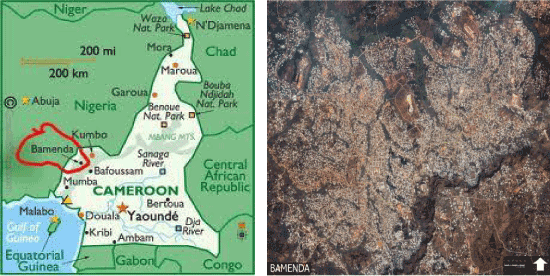 |
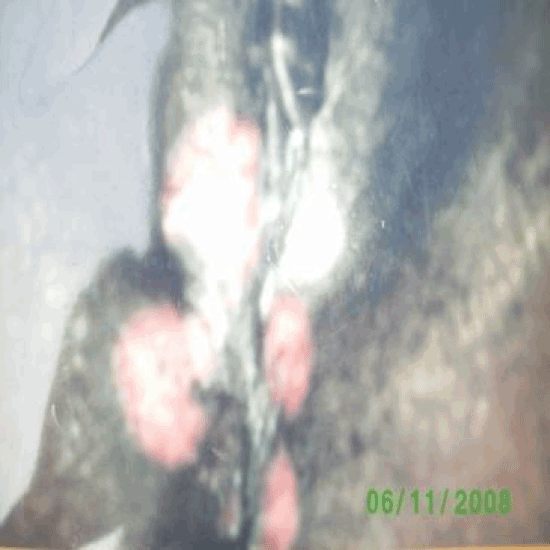 |
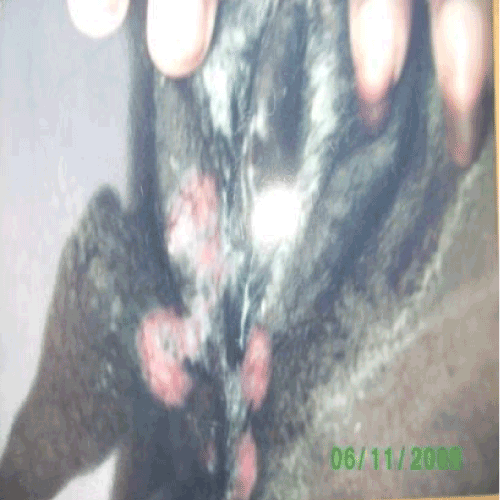 |
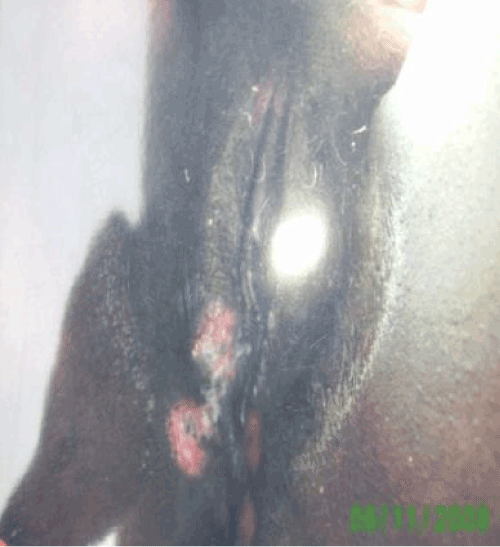 |
|||
| Figure 1 | Figure 2 | Figure 3 | Figure 4 | |||
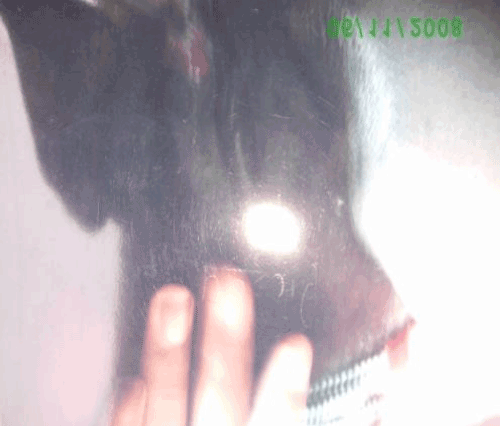 |
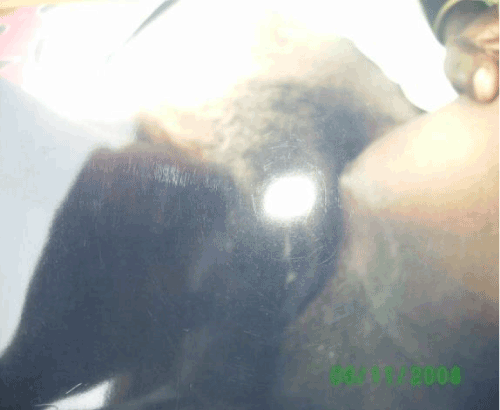 |
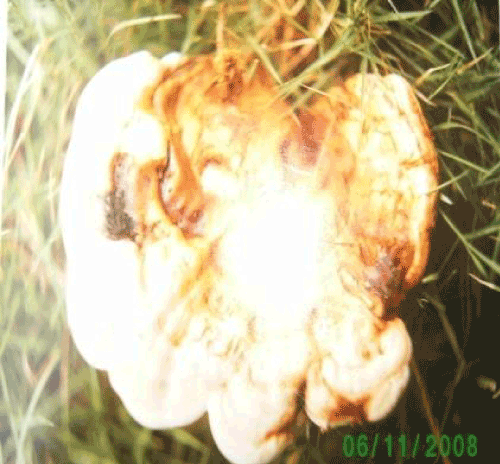 |
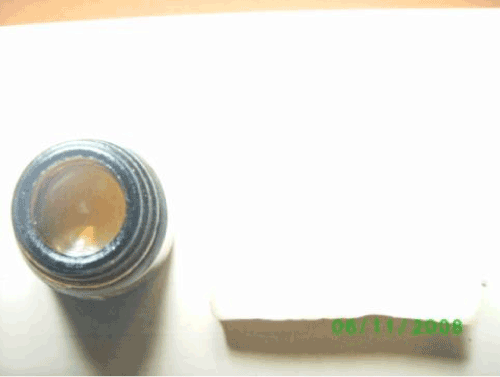 |
|||
| Figure 5 | Figure 6 | Figure 7 | Figure 8 |
Relevant Topics
- Agglutination
- Anovulation
- Bacteriostasis
- Biological Processes
- Biopharmaceuticals
- Catabolism
- Catalysis in Organic Synthesis
- Defoliation
- Deossification
- Digestion
- Drug Discovery Process
- Eburnation
- Ecchymosis
- Effacement
- Erythropoiesis
- Eutrophication
- Green Chemistry in Process Research
- Introversion
- Intussusception
- Molecular and Cellular Biology
- Molecular Pharmacy
- Nanomedicine and Nanoparticle Drug Delivery
- Pharmaceutical Nanotechnology
- Pharmacokinetics and Pharmacodynamics
- Protein Protein interactions
Recommended Journals
Article Tools
Article Usage
- Total views: 15815
- [From(publication date):
December-2014 - Aug 30, 2025] - Breakdown by view type
- HTML page views : 11166
- PDF downloads : 4649
